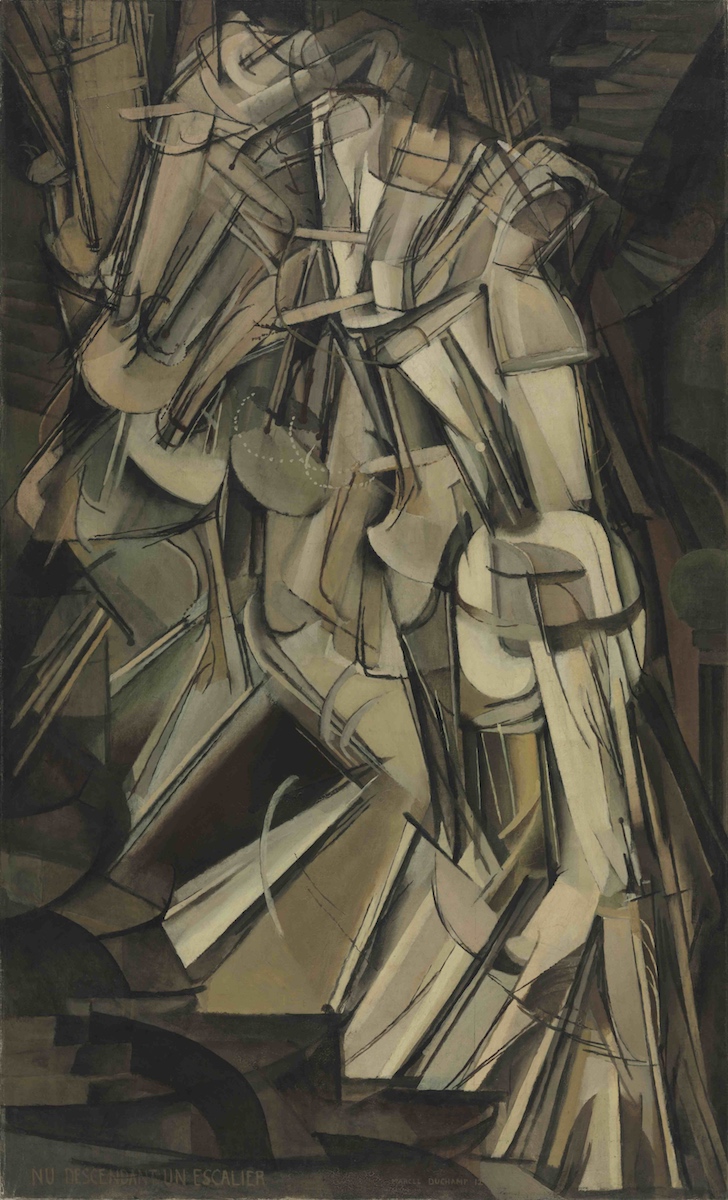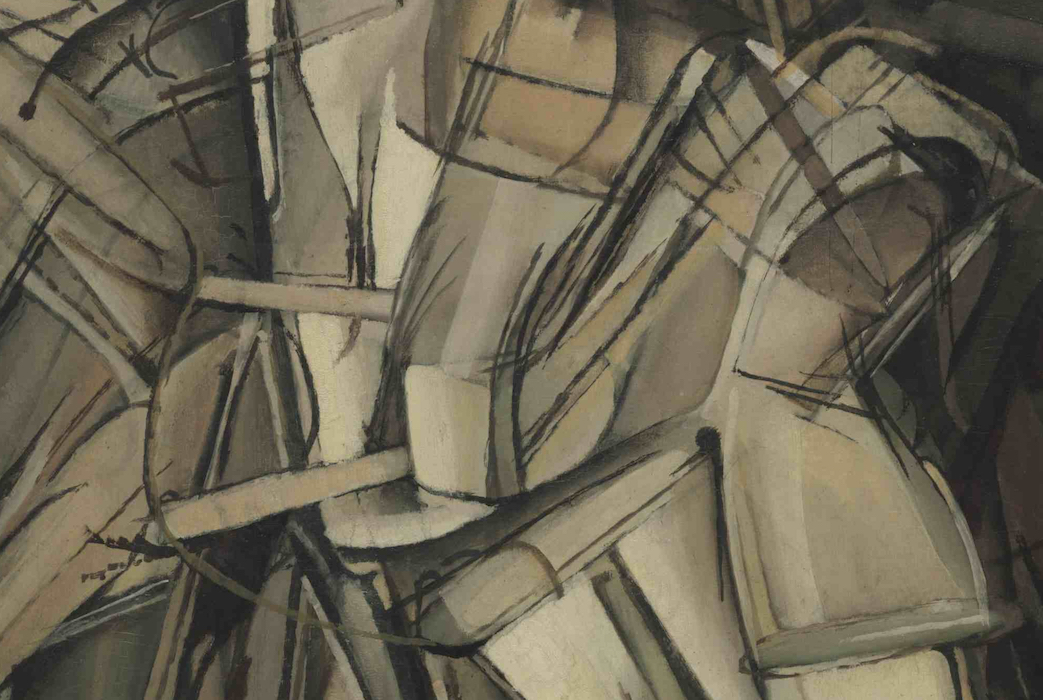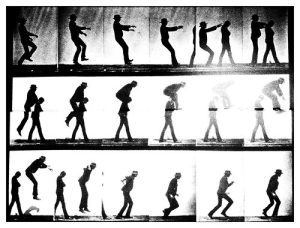Marcel Duchamp, Nude Descending a Staircase, No 2

The 1913 exhibition, dubbed “The Armory Show” for its installation in New York City’s 69th Regiment Armory, proposed to survey modern art from Romanticism of the early nineteenth-century to Cubism of the present. Duchamp sent his painting Nude Descending a Staircase (No. 2) to America. His now famous depiction of a body in motion walking down a narrow stairway quickly drew outrage from a public unfamiliar with current trends in European art, and became a succès de scandale (success from scandal) that launched Duchamp into the American spotlight. But why was the painting so shocking?

As the exhibition toured the country, Duchamp’s painting captured widespread attention for its unconventional rendition of the nude. He positioned the figure — its upright stance reiterated by the vertical orientation of the canvas — in a descending diagonal from upper left to lower right. A tangle of shattered geometric shapes suggest the stairs in the lower left corner of the composition while rows of receding stairs at the upper left and right frame the strangely multiplying female form as she descends. But what a descent! The figure recalls the whirling of a robot promenading down a set of stairs as if in some sort of futurist movie, or perhaps a magic lantern show — a popular form of image projection in the years before the development of cinema.
Duchamp’s subject matter is nearly indecipherable. His figure registers as female because of the convention, at least in recent years, that expects most nudes in art to be women. Moreover, the style was an extreme distortion of even the most contemporary kind of realism at the time. It was, perhaps, for these reasons that the painting challenged audiences, such as the uncomprehending critic who described Nude Descending a Staircase (No. 2) as “the explosion of a shingle factory.”[1]
Like much European modernism (think Cubism or Futurism), the painting abandoned any resemblance to nature. Its relatively monochromatic palette of warm browns and ocher subtly tinged with a grayish blue-green is typical of early Cubist paintings by Pablo Picasso and Georges Braque who had wanted to minimize the optical effects of color and emphasize, instead, a revolutionary new conception of space. In this regard at least, Nude Descending a Staircase (No. 2) did not disappoint.

Nude Descending a Staircase (No. 2) did not waiver from its origins in Cubism. But, the unusual sense of motion conveyed in the painting may reflect an additional influence in the photography of Eadweard Muybridge who had invented a camera shutter in 1882 that allowed for an early version of time-lapse photography. Notice how the figure approximates the blur one might see with time-lapse imagery. In Nude Descending a Staircase (No. 2), Duchamp had welded a cubist style of shattered picture planes to the kind of painting being done by the Italian avant-garde movement Futurism, typified by Umberto Boccioni’s Unique Forms of Continuity in Space. The painting, as a result, is sometimes referred to as a Cubo-futurist work.[2]

